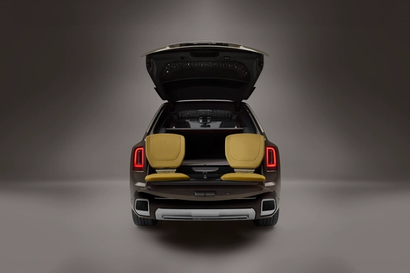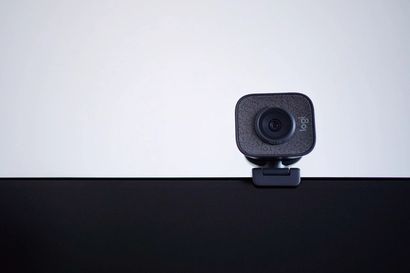Think Cornwall and what will most likely come to mind are pasties, Poldark and picture-perfect coastlines – not the centre of the UK's space industry. Yes, beyond the beaches lie some of the world's most advanced facilities for space exploration, such as the Goonhilly Earth Station and the Spaceport – located outside Newquay – which recently launched the ill-fated Virgin Orbit capsule in January of this year.
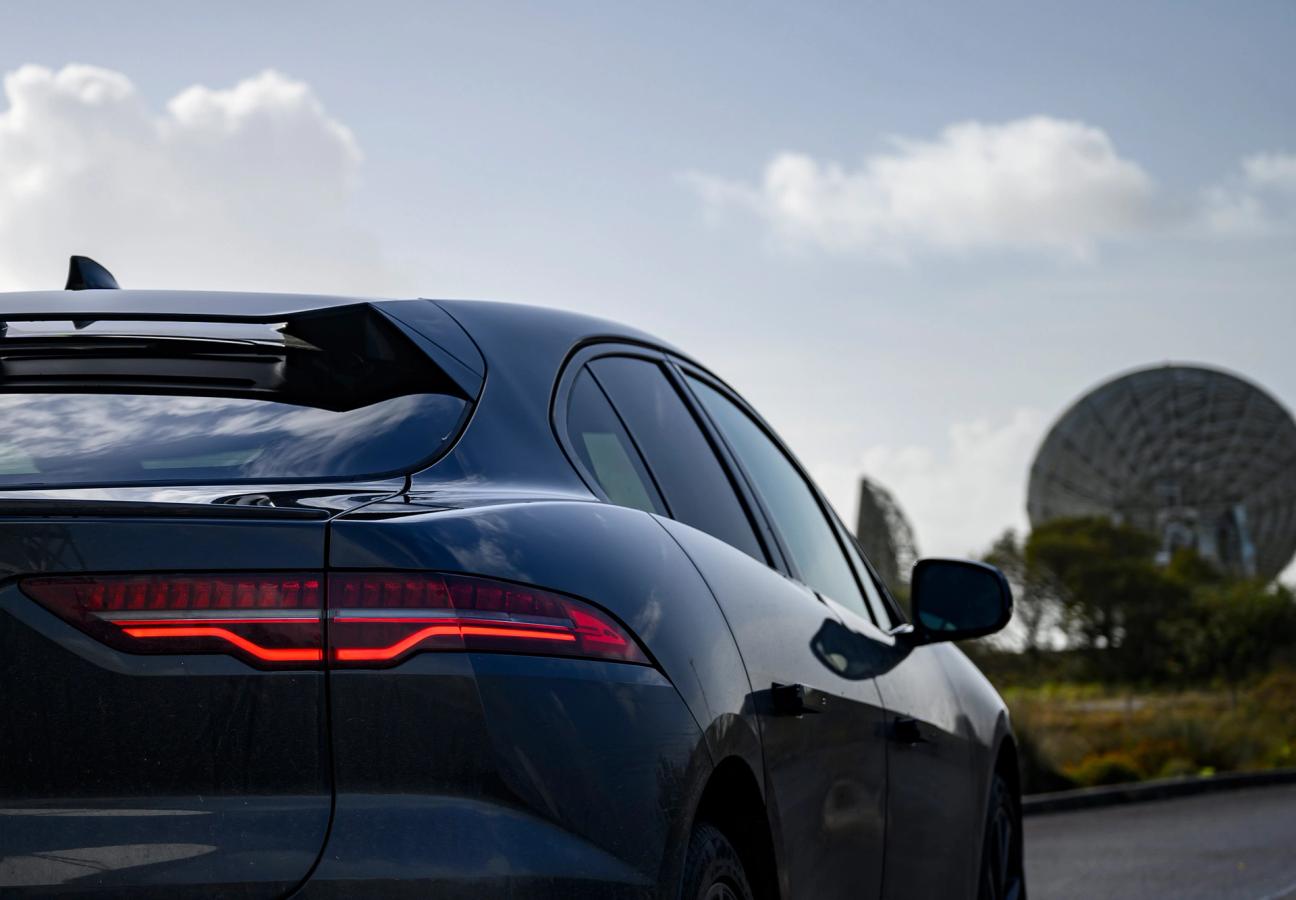
Although the sites are unassuming, both pack a punch when it comes to dealing with otherworldly matters, covering everything from deep-space investigations to the launch of satellites. Heading down there on an all-electric road trip to suss-out the secrets of the UK’s space industry, I opt for a Jaguar I-Pace – a car from a marque aptly founded on the principles of grace, pace and space. Okay, Sir William Lyons, co-founder of Jaguar, didn’t exactly mean extra-terrestrial travel when he coined the saying back in the 1950s, but it’s a tidy phrase to tie-up our journey.
When the I-Pace was first launched, back in 2018, it really was otherworldly. Jaguar’s then chief designer, Ian Callum, saw the opportunity to create something radical, given its unconventional all-electric underpinnings. “I know some people see Jaguar as being a conservative, old brand, but if you look at the history, it’s been more disruptive than not,” said Callum, back at the car’s launch in Geneva, 2018. “I saw [I-Pace] as an opportunity to be disruptive.”
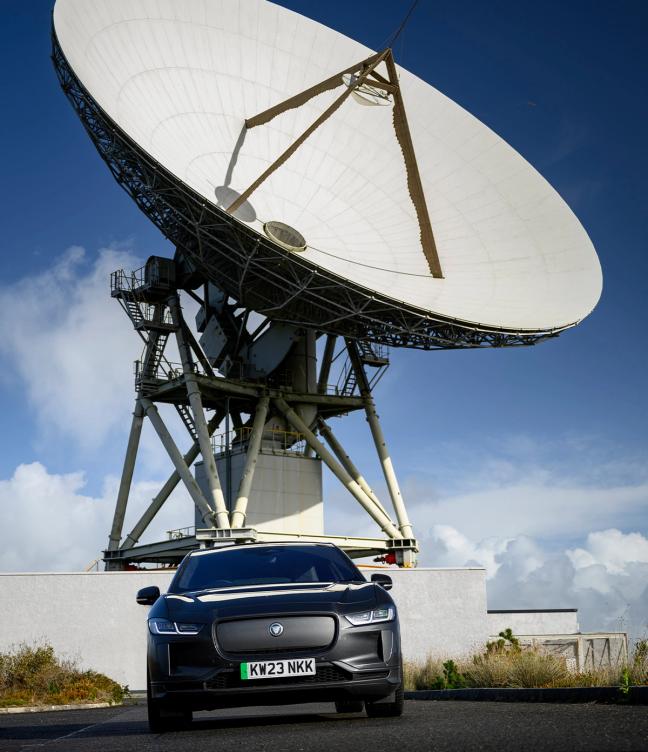
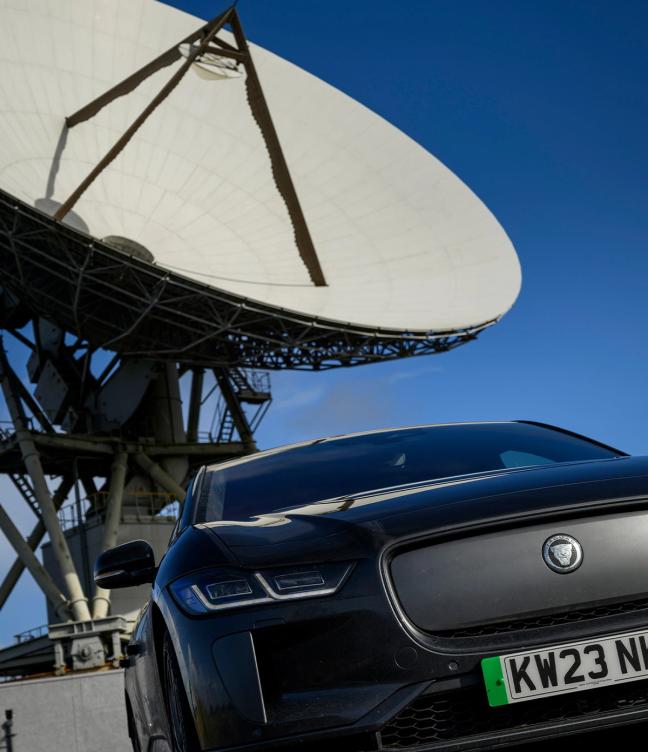
Still looking fresh, despite approaching the six-year mark, it remains a hugely competent family EV, with sharp handling and a surprisingly spacious interior.
Loading up in London, and starting with a full battery, we sprint through much of the west country, gliding down towards the narrow, twisting lanes of Cornwall. With a realistic range of more than 200 miles, the I-Pace can cover off a good distance, but getting to this far-flung corner of the UK involves a brief stop at an Ionity rapid charger outside Exeter. Fully charged up and ready to go within the hour, we continue on to our first port of call, the eerie Goonhilly Earth Station, high up on Cornwall’s Lizard Peninsula.
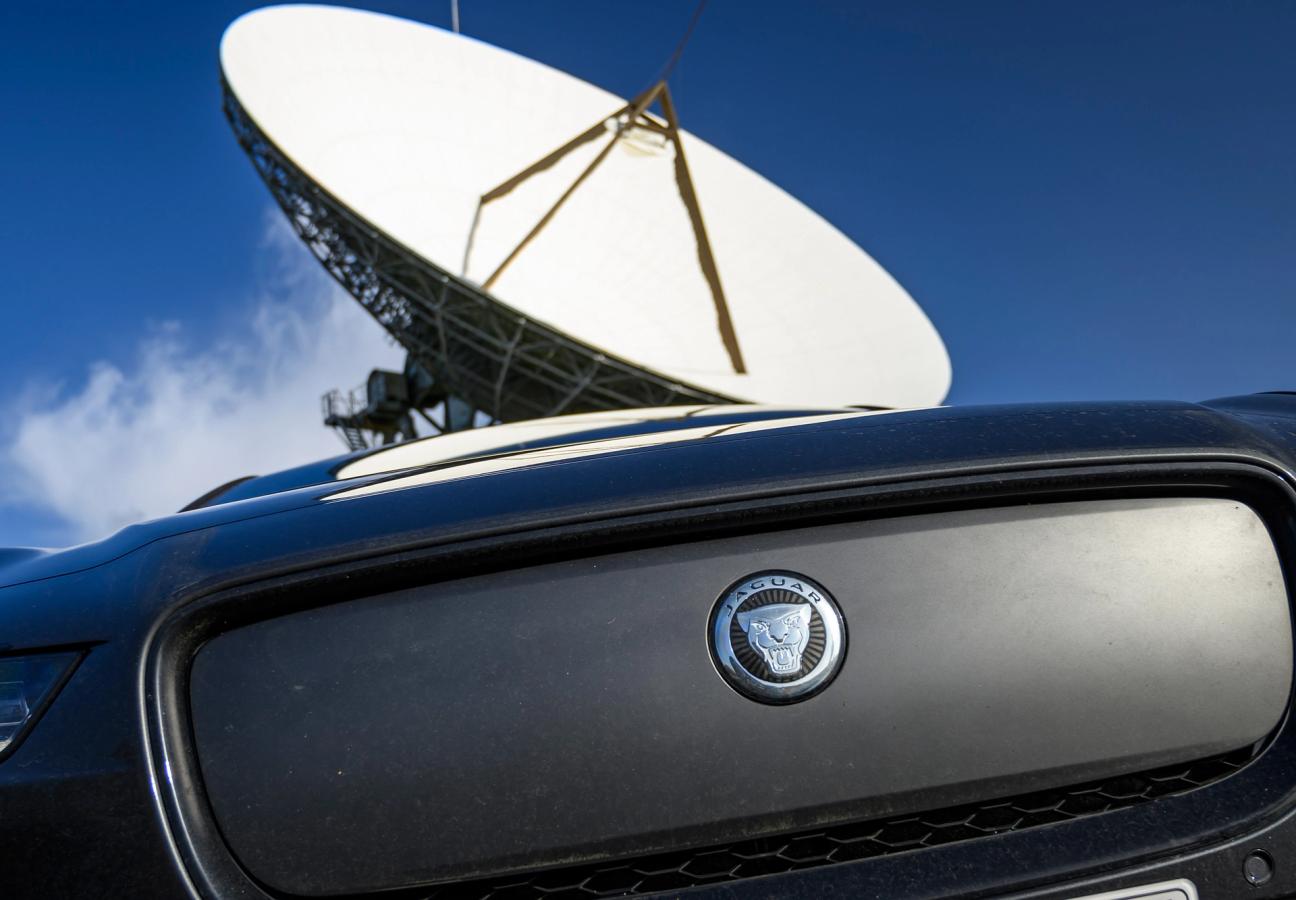
Like something from the set of a 1960s Bond film, the Earth Station first came to the public’s attention in 1962, when Aerial-1 – affectionately known as Arthur – received the first transatlantic TV signal of a speech by President John F. Kennedy. A few years later, in 1969, it beamed footage of Neil Armstrong’s first steps on the moon to an audience of 600 million, and, in 1991, it was an anchor point for the first internet, connecting the US to Europe.
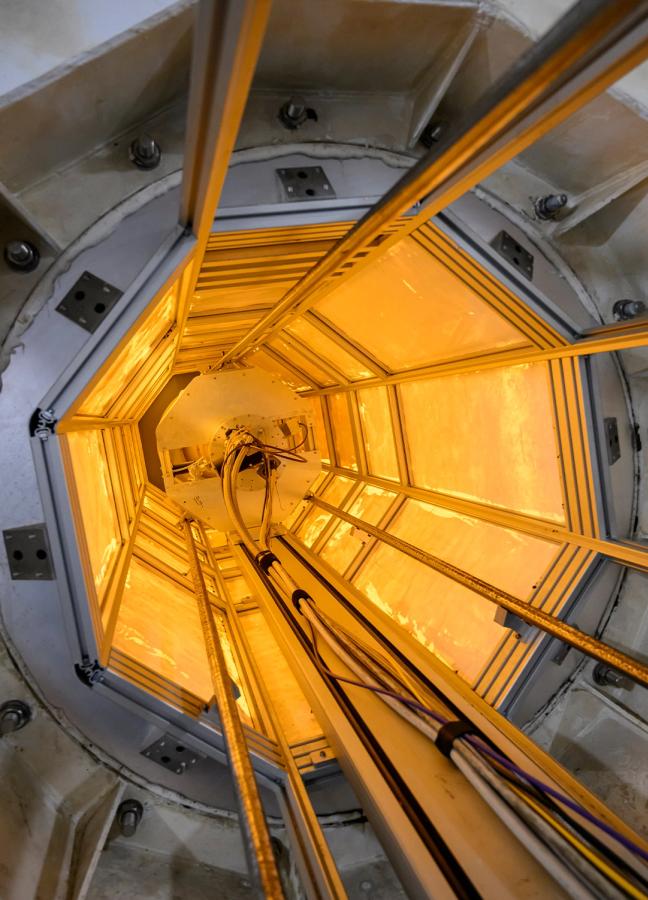
Today, it takes on far more advanced tasks, from guiding spacecraft from the US, India, Japan (and various other countries) to communicating with the thousands of satellites belonging to Elon Musk. “We work with everyone from ISA and NASA to JAXA – the Japanese space agency and the Indian Space Agency,” says Chris Emes, Near Space Business Development Manager at Goonhilly. “We [are] at the forefront of space, and this technology pushes the whole southwest and the UK forward,” he explains.
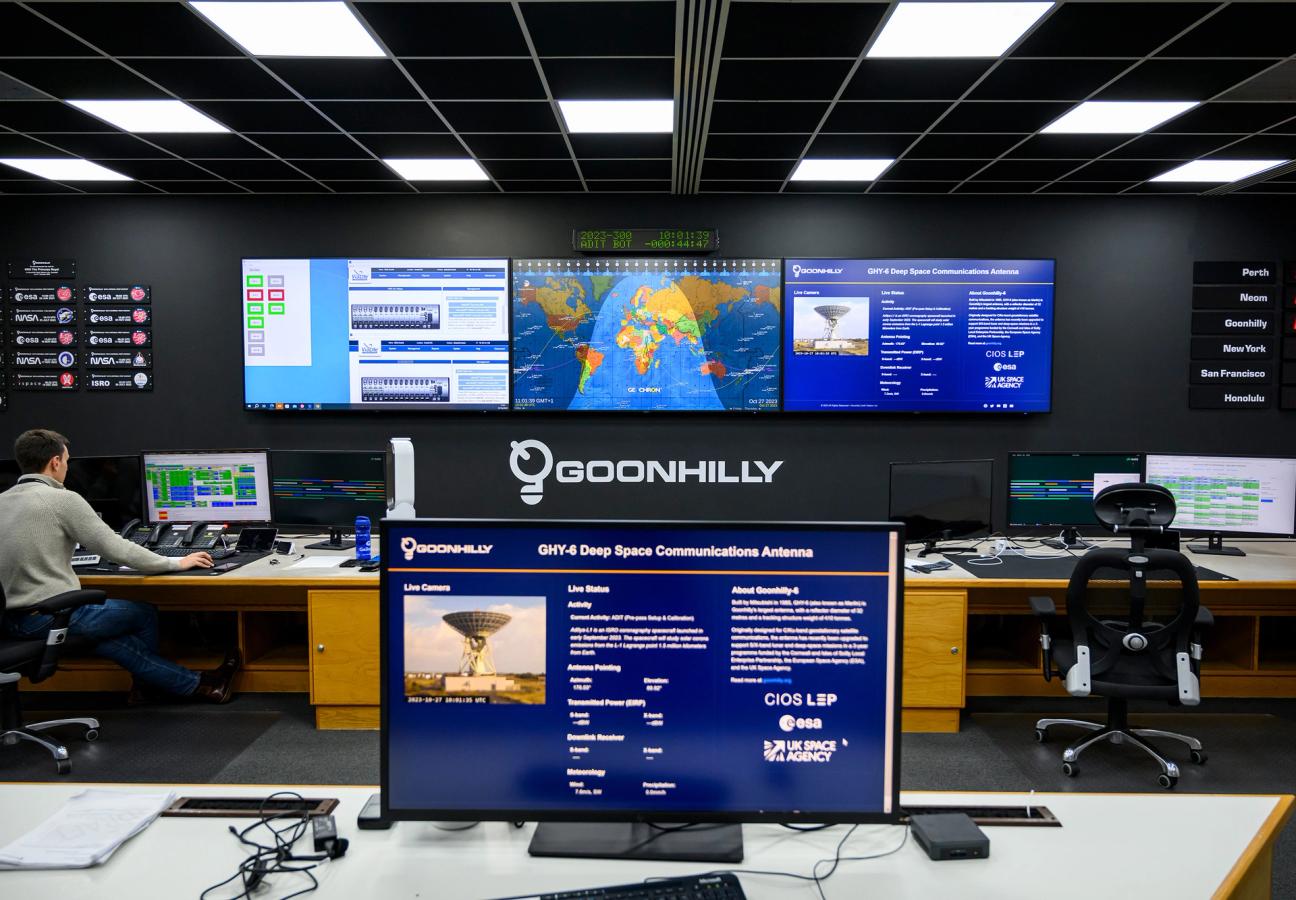
Lucky enough to enter into the site’s screen-laden mission-control room as the main dish was being adjusted, we observe a 1,118t dish gradually move into position. As we watch, we’re surrounded by beautiful countryside, silence and, bizarrely, a neighbouring flock of alpacas. (Well, we are in rural Cornwall, after all.)
With a head overwhelmed with deep-space facts and figures, I head to my second stop of the day: Spaceport Cornwall, opposite Cornwall Airport Newquay. As the UK’s first operational spaceport, the site supports the launch of small satellites and also serves as a hub for space-related businesses.


“There [are] different space clusters throughout the UK and they're all mutually complementary, but Cornwall is the only place you can launch at the moment,” says Ross Hulbert, Head of Engagement at Spaceport Cornwall. “This is a local thing that’s been well-supported by the council, but it's of national significance,” he adds.
For the launch of the ill-fated Virgin Orbit Launcher One, the rocket took off from Spaceport Cornwall, on 9 January, strapped to the wing of a Boeing 747 Jumbo Jet named Cosmic Girl. Laden with satellites, the rocket was meant to reach space, but a dislodged fuel filter resulted in it falling short of its target.
Despite the setback, the launch marked a milestone for the UK’s home-grown space industry, which proved it could manufacture satellites and rockets, as well as launch them – technical faults aside, of course.
“Cornwall isn't just a place for holidays and pasties,” Hulbert reminds me as I set off, ready to blast back to London. With the new space-race heating up as the likes of Musk and Jeff Bezos battle for control beyond Earth, this quiet coastal corner looks set to become even more of a hotbed for extra-terrestrial activity. Watch this space.
Want more motoring content? We review the Ineos Grenadier, a proper retro-inspired off-roader…

Become a Gentleman’s Journal Member?
Like the Gentleman’s Journal? Why not join the Clubhouse, a special kind of private club where members receive offers and experiences from hand-picked, premium brands. You will also receive invites to exclusive events, the quarterly print magazine delivered directly to your door and your own membership card.
